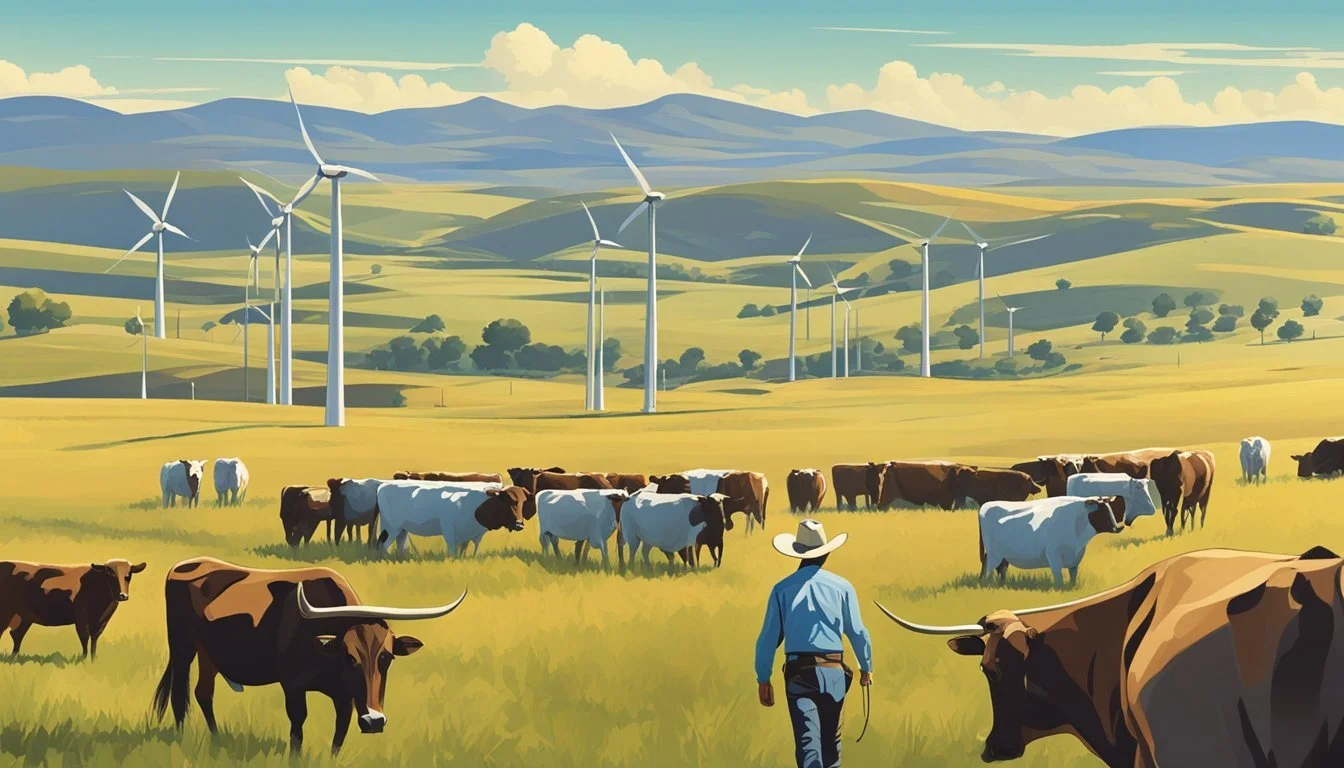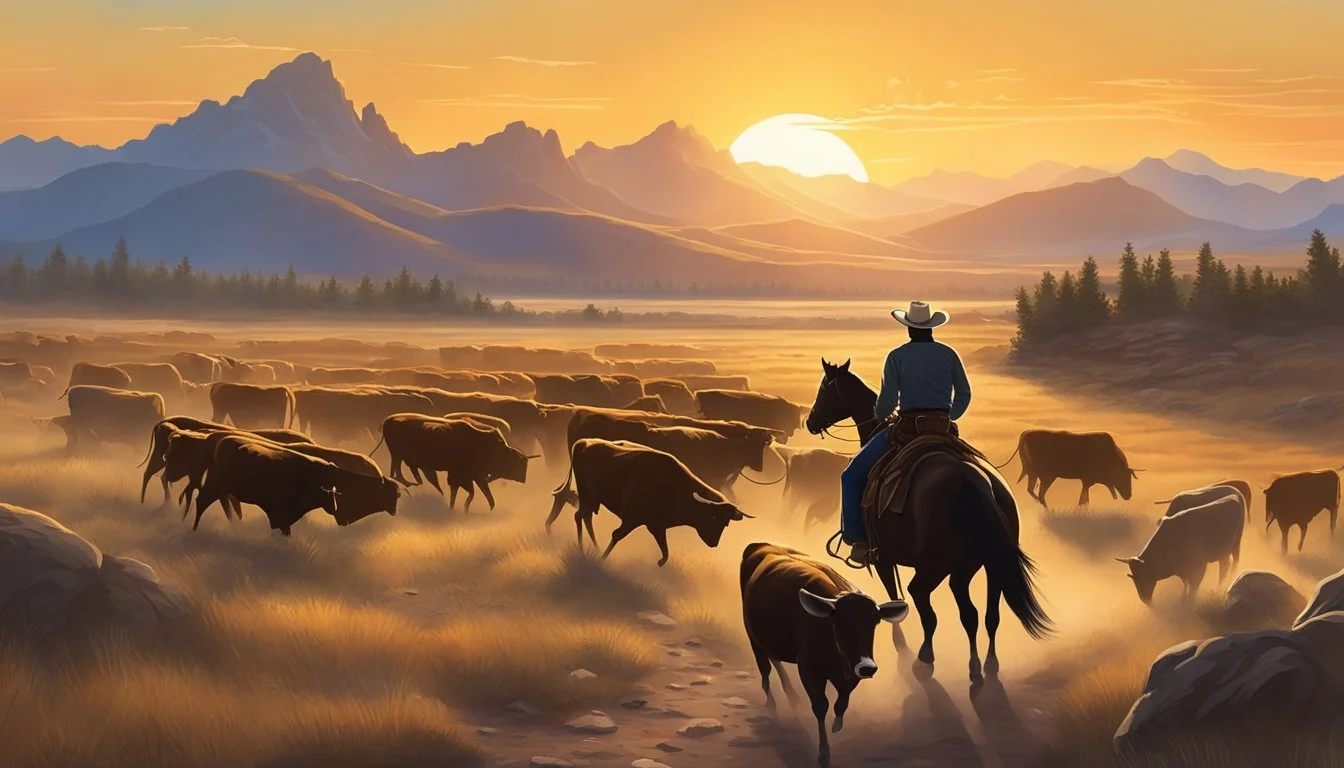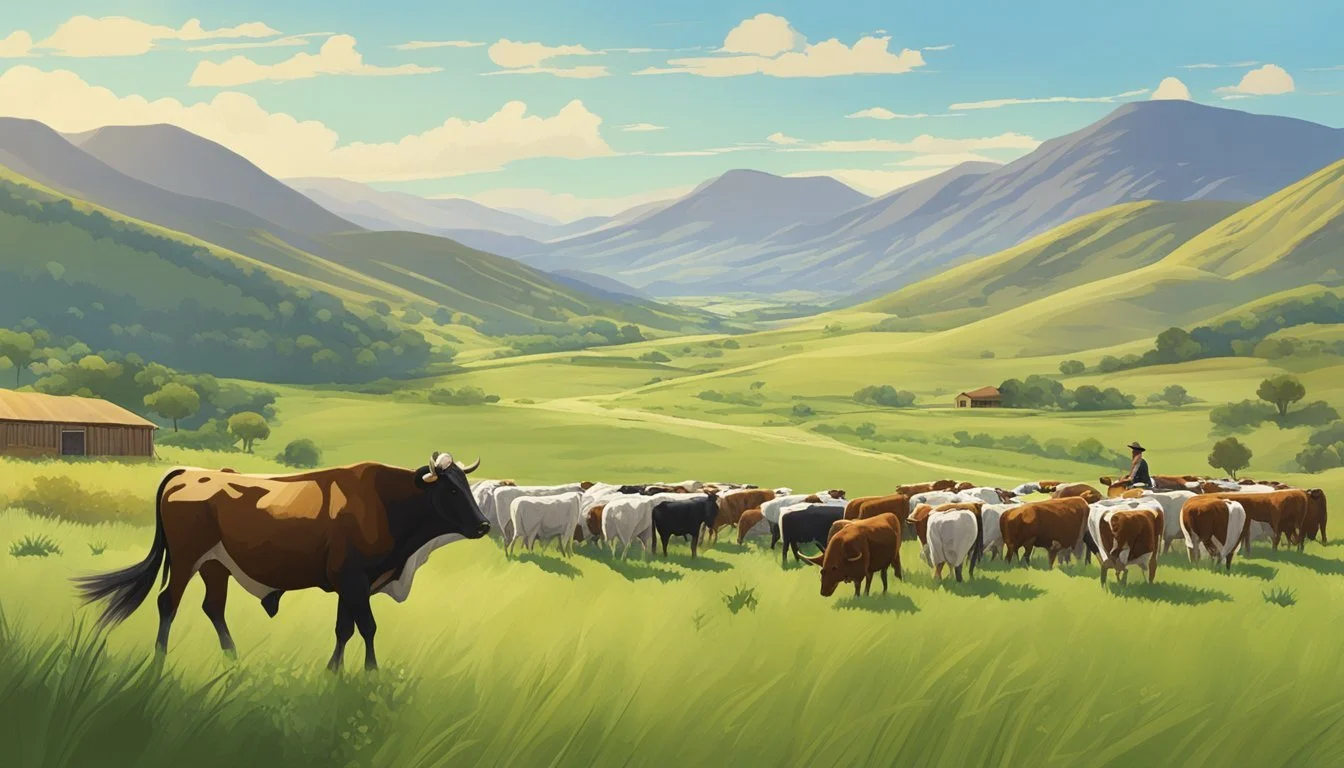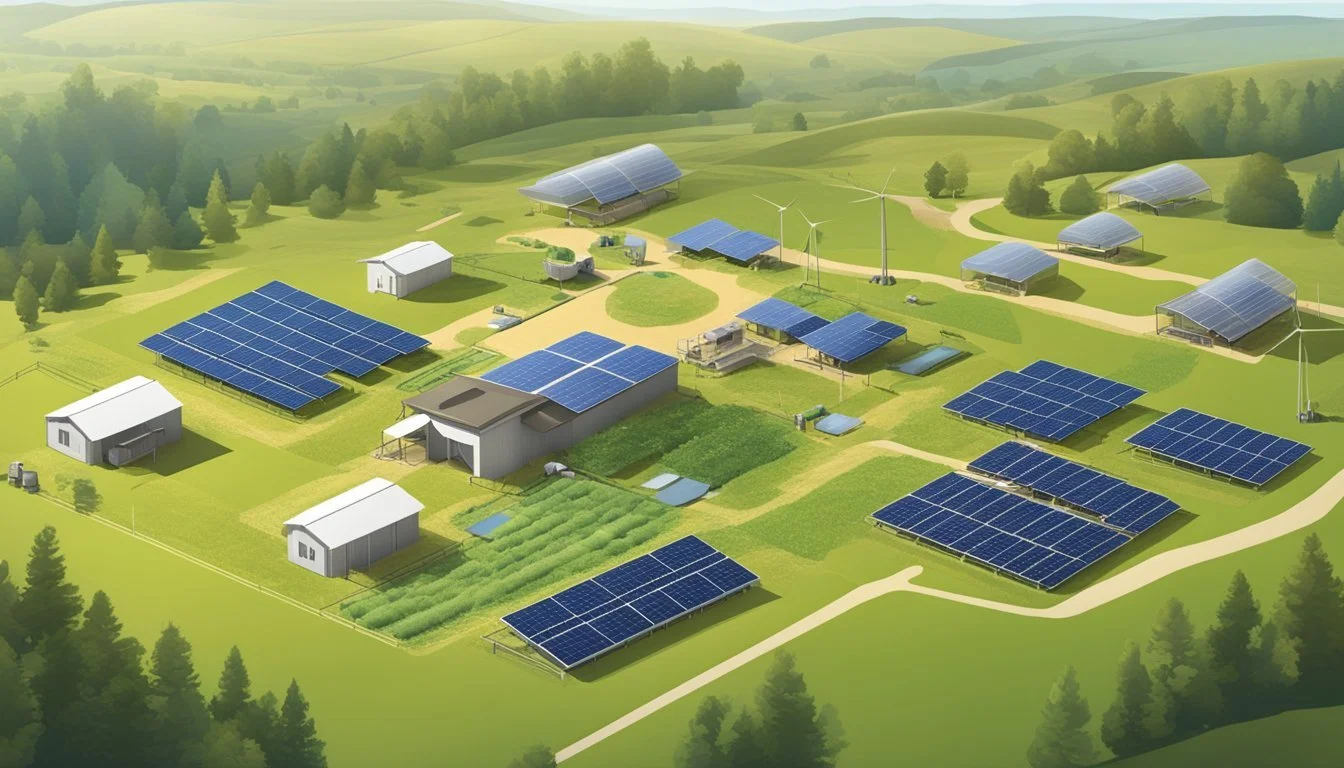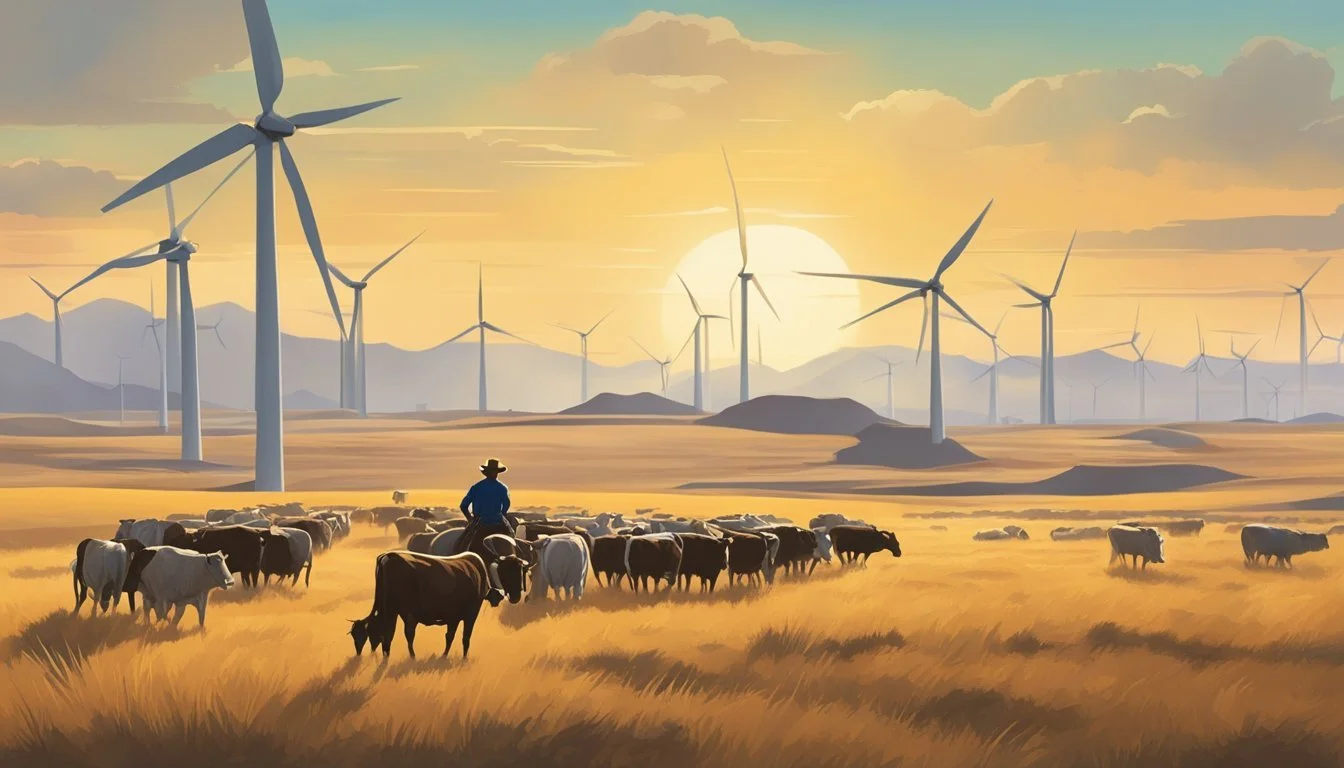The Role of the Modern Cowboy in Sustainable Ranching Practices
Modern ranching has evolved to embrace sustainable practices that intertwine the age-old profession of the cowboy with contemporary ecological consciousness. As stewards of vast expanses of rangeland, modern cowboys and ranchers are increasingly recognizing the importance of sustainable methods that support biodiversity, soil health, and water conservation. Balancing the economic demands of cattle production with environmental stewardship, ranchers are employing techniques like rotational grazing systems to enhance pasture longevity and ecosystem health.
The concept of sustainability in ranching extends beyond environmental concerns; it encompasses social and economic dimensions that ensure the long-term viability of ranching communities. Today's ranchers are integrating traditional knowledge with scientific advancements to foster practices that contribute positively to their surroundings. By carefully managing livestock grazing patterns and ensuring a diversity of plant species in pastures, they bolster the land's resilience to climate change and other ecological challenges.
Through the lens of conservation, the role of cowboys has expanded to include careful monitoring of land-use practices and proactive adaptation to preserve the ecological integrity of ranching territories. The modern cowboy is not only a symbol of a rugged, pastoral way of life but also an agent of change who navigates the delicate balance between human agricultural activity and the natural environment. This fusion of tradition and innovation is charting a path toward a more sustainable future for ranching.
History and Evolution of the Cowboy
The cowboy, an iconic figure of the American West, has seen a comprehensive transformation from the rough-riding rangers of the past to the modern stewards of sustainability in ranching.
From Riding Rangers to Modern Stewards
The early cowboys, known for their horsemanship and cattle herding skills, were often young men seeking employment opportunities in the wide-open spaces of the West. They made about $25 to $40 a month, a modest wage for a challenging job that involved herding cattle, maintaining horses, and repairing fences. These "riding rangers" were instrumental in moving vast herds of cattle across the open country.
Vaqueros: The roots of cowboy culture stem from the Spanish vaqueros, skilled in ranch operations.
Settlers' Influence: As settlers moved westward, they adopted the vaquero's techniques, blending them with their own practices to form a distinct cowboy culture.
Influence on American Culture and Heritage
The cowboy became a potent symbol of American independence and resilience, with a strong connection to the lands of the West. Cowboy culture, rich in tradition, was widely celebrated and integrated into the American identity.
Rodeos and Ranching: Rodeos reflect the enduring cowboy heritage, promoting traditional skills of riding and roping.
Culinary Influence: Even culinary aspects like barbeque have roots in this culture, showcasing the cowboy's enduring influence.
Transition to Sustainable Practices
Modern cowboys are not just cultural icons but play a pivotal role in aligning ranching traditions with sustainable practices. They leverage technology to ensure that cattle ranching remains viable and environment-friendly.
Tech Adoption: Use of GPS for tracking herds, and drones for monitoring pastures.
Conservation Methods: Implementation of rotational grazing systems to maintain healthy ecosystems.
Sustainable Ranching Fundamentals
Within the sphere of sustainable ranching, a suite of interconnected practices come together to support environmental conservation and economic viability. These practices include the implementation of specific grazing techniques, the application of modern technologies, and the careful management of ranch ecosystems.
Defining Sustainable Practices
Sustainable ranching is the practice of managing herds and land in a way that maintains and improves the soil, water, and biological systems, while also meeting the needs of ranchers and society. Sustainable practices include rotational grazing, which allows grasslands to recover, and holistic management, which considers the intricate dynamics of ecosystems.
Roles of a Modern Cowboy in Sustainability
The modern cowboy is central to enacting sustainable practices, with their role evolving from traditional ranching to incorporating environmental conservation. They assess land conditions, implement rotational grazing plans, and work with natural processes to foster the health of the ecosystem. This necessitates a blend of traditional knowledge with science-based methods.
Promoting Biodiversity and Ecosystem Health
Sustainable ranching aims to promote biodiversity and the health of the entire ecosystem. By managing livestock movement and grazing patterns, cowboys help maintain diverse grasslands. These grasslands are crucial for supporting a wide range of plant and animal species, which together create a resilient agricultural and nature system.
Integrating Technology and Sustainable Methods
Integrating modern advancements such as GPS for tracking herds, data analysis for soil health, and even drones for monitoring pasture conditions, represents the intersection of technology and sustainable methods. These technologies enable precise management of resources and can lead to more informed decision-making in the pursuit of both profits and environmental conservation.
Economic Aspects
The economic viability of modern ranching hinges on the integration of sustainability with profitability. Here, the focus is on how the modern cowboy navigates economic pressures while adhering to sustainable practices.
Balancing Profitability and Environmental Responsibility
Ranchers are adopting management practices that serve both economic interests and environmental stewardship. They leverage sustainable land management techniques, such as rotational grazing, to maintain the health of their livestock and the land. Profitability is achieved by optimizing the carrying capacity of the land without degrading its resources, ensuring long-term economic benefits.
Diversification of Revenue Streams
Modern ranches diversify their income by incorporating various revenue streams beyond traditional cattle sales. They might offer agritourism activities, sell carbon credits through sequestering practices, or develop niche markets for organic and grass-fed beef. This diversification not only bolsters their profits but also spreads risk across different areas of the cattle industry.
Sustainable Ranching in the Marketplace
In the marketplace, sustainable ranching practices distinguish products and can lead to premium pricing. Consumers increasingly value environmentally responsible sourcing, and ranches that implement these practices can tap into new markets. Transparently communicating the sustainability of their practices, cattle ranchers can secure a stronger position within the market, directly influencing their profitability and income.
Environmental Management
In the context of sustainable ranching, modern cowboys are stewards of the land, integrating practices that conserve natural resources and mitigate environmental impacts. They focus on water conservation, responsible land and soil management, and preserving wildlife habitats.
Water Resource Conservation
Water is a vital natural resource in ranching landscapes. Conservation efforts include the implementation of rotational grazing systems that allow grasslands to recover and retain water. Additionally, cowboys are using drip irrigation and rainwater harvesting techniques to minimize water wastage. These methods contribute to maintaining healthy grassland ecosystems and reducing runoff.
Soil and Land Management
Responsible soil and land management are essential to preventing soil erosion and maintaining fertile ground. By employing holistic grazing practices, ranchers can ensure that soil is not overworked. Cover cropping and no-till farming practices help maintain healthy soil structure and biodiversity, which contribute to the overall resilience of the land. Grazing animals play a crucial role by naturally fertilizing the soil through their manure.
Ranching's Impact on Wildlife
Modern ranchers aim to balance the needs of their operations with the conservation of wildlife. They assess the environmental impact of their practices through indicators such as habitat diversity and species population levels. Initiatives may include setting aside conservation easements and incorporating wildlife corridors to allow for the free movement of species. These actions demonstrate a commitment to environmental conservation and respect for native ecosystems.
Grazing Practices and Livestock Health
Modern cowboys contribute importantly to sustainable ranching through meticulously managed grazing practices, which are vital to livestock health and land conservation.
Rotational Grazing and Land Carrying Capacity
Rotational grazing is a method where cattle are moved from one pasture to another, allowing land to recover between grazings. This practice supports the land's carrying capacity, meaning the land can sustain a certain number of livestock over time without environmental degradation. By managing herd movement, cowboys can help maintain soil fertility and prevent overgrazing, ensuring the land remains productive and capable of supporting cattle long-term.
Grazing Patterns and Their Environmental Effects
The patterns in which cattle graze significantly affect their surrounding environment. Uniform grazing patterns, often achieved through strategic distribution of water sources and mineral supplements, can reduce the environmental impact. Thoughtful grazing practices minimize soil erosion and promote the growth of a diverse range of plant species beneficial to the ecosystem, demonstrating how livestock grazing, when done correctly, can coexist with the preservation of natural landscapes.
Health and Welfare of Cattle
Cattle well-being is paramount in sustainable ranching. Modern cowboys are often equipped with knowledge in genetics and disease management aimed at enhancing animal welfare. Appropriate grazing practices contribute to cattle health by providing them with a varied diet and reducing the risk of disease spread, which tends to be higher in stationary, crowded conditions. By prioritizing rotational grazing, cowboys help ensure that the cattle have access to fresh forage and are less vulnerable to parasitic infections, thus supporting overall livestock health.
Advances in Ranching Technology
The modernization of cattle ranching harnesses the power of innovative technologies, substantially enhancing efficiency and sustainability in livestock management. This revolution in ranching is driven by the integration of advanced tools and systems designed to provide precision, control, and insightful data to ranchers.
Application of GPS and Satellite Imagery
GPS (Global Positioning System) has transformed the landscape of cattle ranching, allowing for precise tracking and management of livestock. With GPS tracking collars, ranchers can monitor the movement and behavior of cattle across vast ranges, ensuring optimal grazing patterns and preventing loss or theft. Satellite imagery further complements these efforts by offering detailed insights into vegetation patterns, water sources, and land conditions, which are essential for strategic grazing and land management.
Key benefits of GPS and satellite imagery:
Accurate herd location tracking
Enhanced pasture management
Improved resource allocation
Incorporating Drones and Automated Systems
Drones are increasingly becoming a pivotal element in advanced ranching operations. Equipped with high-resolution cameras and sensors, drones provide a bird's-eye view of the herd and landscape. This aerial perspective is crucial for monitoring herd health, inspecting fences, and surveying difficult-to-reach areas. Automated feeding systems are another technological stride, delivering feed efficiently and consistently, thereby optimizing the feeding schedules and dietary needs of cattle.
Drone and automation capabilities:
Aerial monitoring of livestock
Automated delivery of feed and water
Fence and infrastructure inspections
Data Analytics and Livestock Monitoring
Data analytics is at the heart of technological advancements in ranching. Through the collection and analysis of data from various sources, including on-body sensors and environmental inputs, ranchers can make informed decisions about the health and productivity of their livestock. Remote monitoring further empowers ranchers to keep a constant watch over their herds and receive alerts for any anomalies that indicate illness or distress. This proactive approach ensures that issues are addressed promptly and effectively.
Advantages of data analytics in livestock monitoring:
Early detection of health issues
Optimization of breeding cycles
Insights into herd performance patterns
Conservation and Ranching Community
Modern cowboys are at the forefront of merging traditional ranching practices with conservation efforts, creating sustainable communities and ensuring that their legacy of stewardship is passed on through education.
Building Sustainable Communities
Sustainable communities aim to balance ecological, economic, and social needs, all of which are integral to ranching communities. Cowboys and ranchers today often employ holistic management practices that support the health of the land while also looking to renewable energy sources to power their operations.
Renewable Energy: Integration of solar panels and wind turbines.
Holistic Land Management: Use of rotational grazing to promote soil health, water retention, and biodiversity.
These practices contribute not only to the conservation of the land but also fortify the socioeconomic fabric of the communities built around ranching.
Educational Outreach and Legacy
Education is a cornerstone for sustaining a culture of conservation within ranching. Educational outreach programs focus on teaching sustainable practices and the importance of ecosystem conservation not just within the ranching community, but to the public at large.
Workshops and Seminars: Offered to ranchers and the community on sustainable grazing and land management.
Youth Engagement: Programs that involve younger generations to ensure a lasting legacy of conservation-minded ranchers.
Cowboys act as custodians of the land, embodying a culture that respects and nurtures the environment. Through community-oriented education, they are setting a foundation for future generations to continue with sustainable and environmentally conscious ranching practices.
Challenges and Adaptations
The modern cowboy must navigate a complex landscape, balancing ecological, economic, and climate-related challenges to sustain the ranching heritage.
Dealing with Climate Variability and Drought
Climate resilience has become a focal point for cattle ranchers facing the reality of climate variability and drought. They are adapting to these conditions by managing grazing patterns to support land health and prevent soil degradation. In some areas, ranchers have diversified livestock to include bison, sheep, and elk, which are better suited to withstand dry climates and help maintain a more diverse ecosystem.
Grazing Management: Implementing rotational grazing to reduce land stress.
Water Conservation: Utilizing efficient irrigation and water storage methods.
Species Diversification: Incorporating drought-resistant animals like bison.
Facing Economic Pressure and Market Fluctuation
Economic sustainability is equally critical for the modern cowboy who must be astute in managing costs and responding to market fluctuations. Ranchers are employing innovative strategies to enhance market resilience and maintain profitability despite unpredictable market trends. This includes direct-to-consumer sales channels and participation in markets that value sustainable practices.
Cost Management: Minimizing inputs to reduce operational costs.
Market Diversification: Exploring alternative markets and premium product lines.
Direct Sales: Engaging with consumers directly to improve profit margins.
By employing these strategies, ranchers are working to ensure that their operations can endure and thrive in the face of ongoing challenges.
Cultural Significance and Future Visions
The modern cowboy embodies a critical balance between age-old traditions and the evolving responsibilities inherent in sustainable ranching practices.
Maintaining Cowboy Traditions in the Modern Age
The cowboy lifestyle is a living tapestry that marries the storied history of the American West with contemporary ranch life. In states like Montana and Arizona, this tradition perseveres not merely as a nod to the past but as an embodiment of vital skills and community values. Modern cowboys continue to showcase the art of cattle herding and horsemanship which are seen as cultural cornerstones.
Daily Life: Still defined by early risings, livestock care, and land stewardship.
Skill Set: Incorporates both time-honored ranching techniques and new technologies for resource management.
Community: Supports local events such as rodeos, which celebrate and preserve cowboy skills.
Ranchers in places like southern Arizona integrate tradition with new approaches to ensure the land's health and the longevity of the lifestyle they cherish.
Prospects for the Future of Cattle Ranching
The future of cattle ranching rests on the adoption of sustainable practices that harmonize with local ecosystems. The cowboy of the future is expected to become as much a steward of the land as a herder of cattle.
Sustainability Practices: Implementation of managed grazing systems to maintain soil health.
Innovation: Embracing technology, such as remote herd monitoring, which supports proactive land and cattle management.
Education: A commitment to continual learning about eco-friendly ranching methods.
The forward trajectory for ranching weaves together tradition and tech, with cowboys at the forefront of this integrated approach. The tenacity and adaptability that defined the western expansion now propel the industry towards a sustainable and thriving future.

